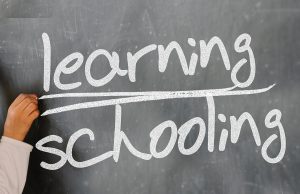Introduction
Public schools in the United States are many as compared to the private schools. There has always been a feeling that private schools in America offer quality education as compared to public schools. This is also a belief that has captured the minds of the whole world. Developed countries, developing countries and underdeveloped countries, both use a similar education system that aims to help the individual grow up as a lucky person who can be self-independent.
A superpower like the United States uses the wider curriculum in its public schools. This curriculum covers religion, health, social relationships and self-reliance. Talent management and other curricular activities are also included. The system is integrated and very complex.
How does the system work?
The wider curriculum has been divided into broad categories, each offering different types of teachings. In public schools in Northern Carolina, children are taught maths skills through modern dances as they explore the solar system. The core curriculum is delivered by the teachers through the arts. The concept was adopted from research that shows a direct correlation between arts and good performance  in mathematics and the sciences. This has made the dances more accessible in the broad USA curriculum in the public schools.
in mathematics and the sciences. This has made the dances more accessible in the broad USA curriculum in the public schools.
The curriculum also comprises a section where students participate in the micro-society after school programs. These programs are done during the regular school days offer a few hours where students are prepared for college life, careers and global citizenship. Here, students learn morals and how to abide by the law. They learn how to work and pay taxes. This combination is to make education fun and practical. Those who participate in these programs improve their average school scores.
This system also has the multi-disciplinary section where specific subjects are directed towards one theme. When subdisciplines are generated within a subject, deeper access and understanding of the subject is made. This is called the intradisciplinary approach. Fusion of skills into the curriculum is also observed as students learn how to care for the environment as a way to promote the ecosystem. Fusion also involves the adoption of core competencies like positive work habits in every subject.
Themes based units are also incorporated into this curriculum. At this state, tutors combine different approaches into one issue and encourage students to take part in the given exercises as per the theme. Other methods include the interdisciplinary approaches that see students acquire interdisciplinary skills from different  disciplines they take.
disciplines they take.
Finally, the curriculum incorporates a transdisciplinary approach where real life contexts are taught. Interdisciplinary skills and concepts are emphasised. This broad curriculum, therefore, has many advantages, including the creation of a holistic student who is well versed in social, political and economic issues. Since the concept is developed to accommodate vast areas, the scope of knowledge, it covers is wide making it the most appropriate platform that assists a student in discovering their personal potential. The curriculum is more fun and makes education enjoyable and lively. Through the integration of many themes to form one curriculum, students can widen their scope through different life spheres, and once a student in the USA discovers their talents; the curriculum supports its incubation.
